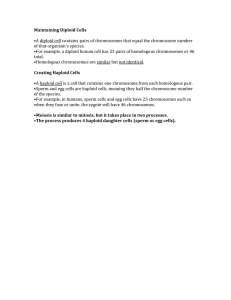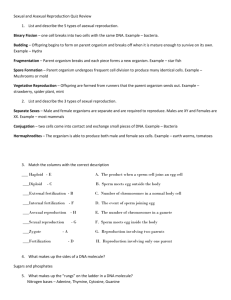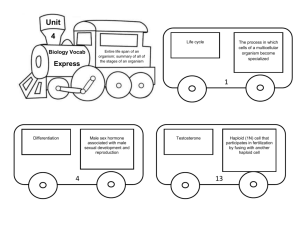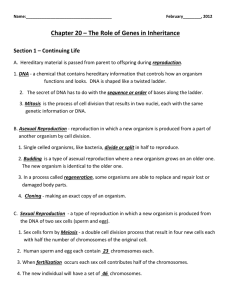Reproduction Vocabulary asexual reproduction chromosome diploid
advertisement
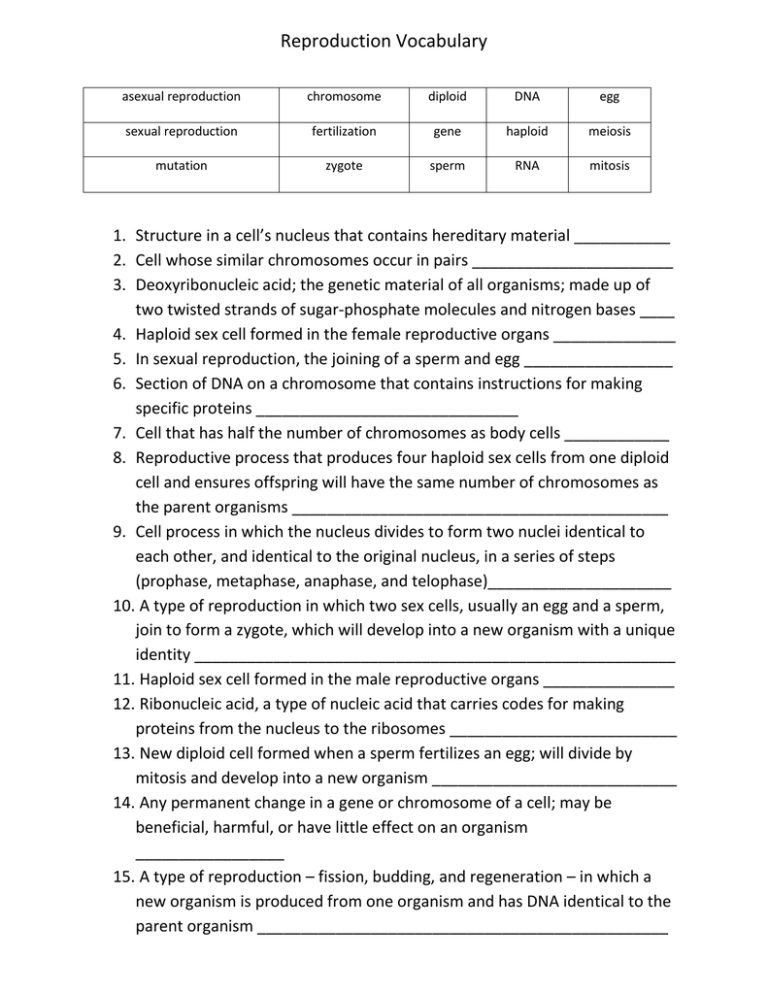
Reproduction Vocabulary asexual reproduction chromosome diploid DNA egg sexual reproduction fertilization gene haploid meiosis mutation zygote sperm RNA mitosis 1. Structure in a cell’s nucleus that contains hereditary material ___________ 2. Cell whose similar chromosomes occur in pairs _______________________ 3. Deoxyribonucleic acid; the genetic material of all organisms; made up of two twisted strands of sugar-phosphate molecules and nitrogen bases ____ 4. Haploid sex cell formed in the female reproductive organs ______________ 5. In sexual reproduction, the joining of a sperm and egg _________________ 6. Section of DNA on a chromosome that contains instructions for making specific proteins ______________________________ 7. Cell that has half the number of chromosomes as body cells ____________ 8. Reproductive process that produces four haploid sex cells from one diploid cell and ensures offspring will have the same number of chromosomes as the parent organisms ___________________________________________ 9. Cell process in which the nucleus divides to form two nuclei identical to each other, and identical to the original nucleus, in a series of steps (prophase, metaphase, anaphase, and telophase)_____________________ 10. A type of reproduction in which two sex cells, usually an egg and a sperm, join to form a zygote, which will develop into a new organism with a unique identity _______________________________________________________ 11. Haploid sex cell formed in the male reproductive organs _______________ 12. Ribonucleic acid, a type of nucleic acid that carries codes for making proteins from the nucleus to the ribosomes __________________________ 13. New diploid cell formed when a sperm fertilizes an egg; will divide by mitosis and develop into a new organism ____________________________ 14. Any permanent change in a gene or chromosome of a cell; may be beneficial, harmful, or have little effect on an organism _________________ 15. A type of reproduction – fission, budding, and regeneration – in which a new organism is produced from one organism and has DNA identical to the parent organism _______________________________________________
